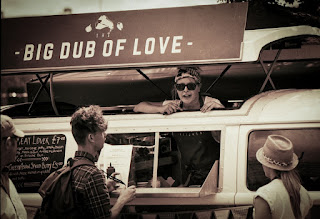***** UPDATE 31 December 2015 *****
I swapped out the Zeiss 16-70mm for the Sony 28-70mm for some of the reasons mentioned in this post. Too likely that a drunkard will bump into me and spill their beer all over my camera.
***** Original Post ****
I have a photography gig tomorrow night, New Years Eve, well, actually, I'll be wearing two hats tomorrow as I will also be DJing part of the evening as well. The party is a big "to do" put on by
Good Times ROK at the Lotte World Hotel in Seoul, South Korea. More specifically, at the
Kloud Beer Station located inside the hotel.
The rig I've chosen, of the many I have to choose from, is pictured below. I've decided on the Sony A6000 with a Zeiss 16-70mm f/4 lens and
Sony HVL-F20M external flash.
Now, why would I select this as my rig for this gig when I could just as easily take my Sony A7II, A7R or A99? Scroll down and I'll give 5 good reasons...
Sony A6000 with Zeiss 16-70mm f/4 lens and Sony HVL-F20M external flash.
Reason # 1 - The Spill Factor
There will be a lot of drinking going on at this party and even though it's taking place in a five star hotel it doesn't mean the New Years Eve revelers aren't going to be chocolate wasted drunk off their asses. And when you have several hundred drunk people walking around with drinks in their hands, there's a strong likely hood that many drinks will be spilled. There's no way I am going to put my A7II, A7R or A99 in harms way, that's just asking for something bad to happen. It's like buying a house on a cliff in Malibu, California and not buying mud slide or earthquake insurance. It's just stupid to take that kind of risk. Whereas, with my Sony A6000, I don't have as much dollar value at stake. Not to say that this rig isn't pricey, it is, relatively speaking. Let's call it $550 for the A6000 body, I paid $850 for the lens and $120 for the flash, so we're talking a total value of $1520 if my math is correct. Shit, maybe I'll leave that Zeiss lens at home and take the Sony 28-70mm. Haha.
Reason # 2 - Track Record
I have shot a number of events with my A6000 in the past, under similar conditions, and was extremely pleased with the results. It will be dimly lit with stage lighting for the DJs, I can shoot without the flash when I am shooting the DJs, as seen in the sample picture below. And then simply flip up the flash when I'm shooting people having a good time on the dance floor or sitting and drinking at their fancy schmancy VIP tables.
Sony A6000 with Sony 50mm f/1.8
Reason # 3 - Compact Size
The more I shoot with my E Mount cameras, the less I find myself wanting to shoot with my Sony A77 or A99 and the main reason for this is the size and weight difference. The Sony A6000 will deliver outstanding images, and at 24 megapixels, it's no slouch in the resolution wars, all in a remarkably compact body. I have to lug around my DJ gear and an overnight bag with my clothes etc, the last thing I want to take with me is an additional camera bag that's going to weigh me down (not with a bad back like mine). No sir, as a matter of fact, I'm not taking a camera bag at all, just the A6000 and a shoulder strap, that's it.
Reason # 4 - Battery Life
I can capture substantially more images on a single battery using the A6000 compared to either my A7R or A7II, both of which are battery hogs. Naturally, I will bring extra batteries with me, but if I can avoid having to change the battery, why not? Additionally, I will have to bring extra "AAA" batteries for the external flash. I'd prefer that my pockets not overflow with batteries.
Reason # 5 - I Love My Sony A6000
Since getting the Sony A7R, I don't take my A6000 out nearly as much as I should. It's been neglected, just sitting up on the shelf, lonely, yearning to be shot. This particular A6000 body has been up and down the length of the Korean peninsula with me and has never failed me.
Stay tuned for images from New Years Eve 2015.

























































